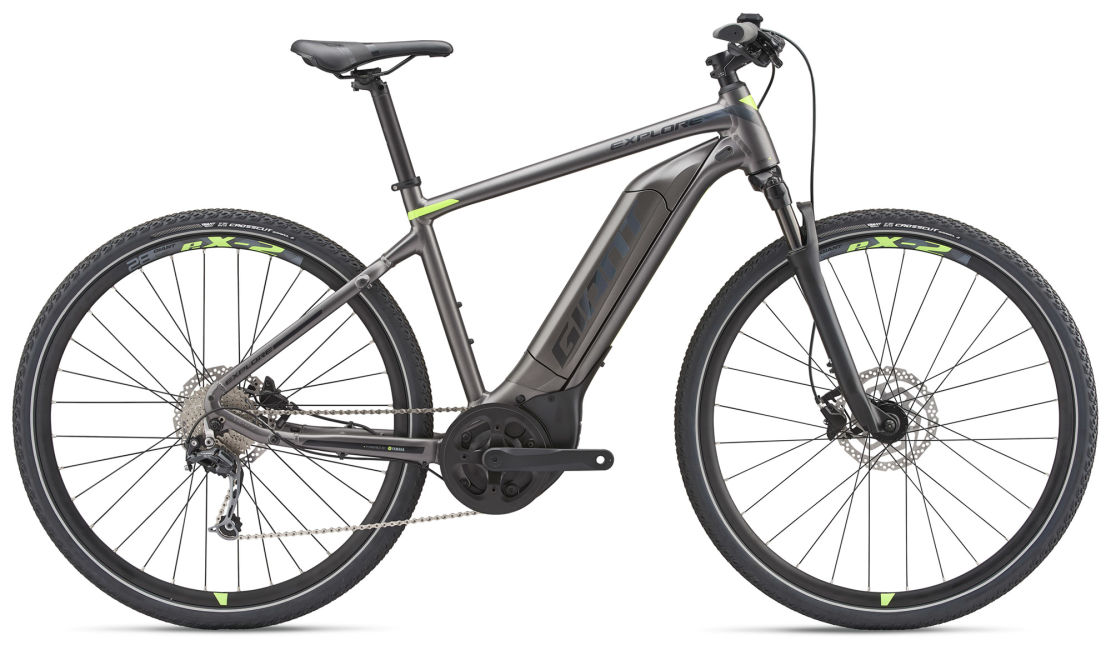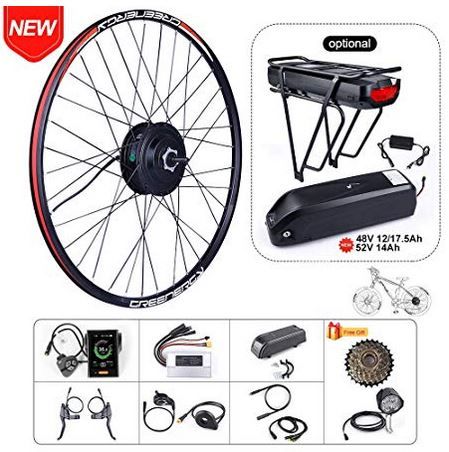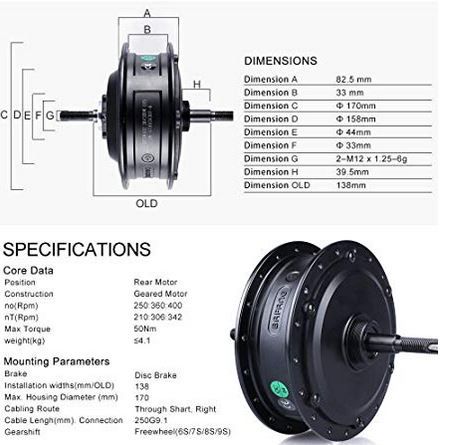Converting Your Bike into an E-Bike.
If you enjoy riding your bike on a fairly consistent basis you've most likely learned about electric bikes or pedal-assist bikes. It's no secret that e-bikes are becoming more prevalent for commuting, running errands, and just getting around faster on two wheels. If you already have your own bike, converting it might be a cost-efficient option to spending a lot of money on a pre-built one. With the right conversion kit, you'll be ready to turn your regular bike into an electric one and save money.
Deciding How to Convert it
This process is simple once you identify what to look for. You go through the same process when buying a regular bike.
What sort of lifestyle needs do you have? Are you commuting to work in the city on level pavement or do you want to go off-road and down long, hilly paths? For many people, making an educated decision can involve a lot of research regarding different kits and their functions. Some conversion kits will come with a wheel and parts to go on your bike and can be as simple as changing a flat. Some kits can go up to $2000 and some are less than $200. Factors to consider are the assembly of the kit, level of customer support, quality of the kit, the complexity of the connections, warranty, replacement parts, etc.
Types of Bike Conversion Kits
There are many different kits available, from motors that fit into a wheel hub that are small and soundless, to larger and more powerful kits. This post will discuss the more popular kits: front, wheel, and mid-drive.
Front Wheel Electric Bike Conversion Kits

Electric Bike Outfitters Clydesdale 2.0 Kit Review
When picking a front hub motor or a rear hub motor there are several factors to look at to ensure you get the proper kit. The major difference is weight. You want to make sure that weight is distributed uniformly, from front to rear. Most batteries are mounted in the middle or back of the bike, so a front hub motor could equalize the weight distribution. A front motor might make the front wheel heavier and harder to steer, but the rear-mounted motor will need to fit with your derailleurs. The front motor is mounted in the center of the front wheel, making it very easy and simple to install. It's recommended to install a torque arm to handle torque since there isn't a lot of traction on the front wheel and a powerful motor would spin out the front tire.
A front motor essentially pulls you while a rear motor feels like you're getting push assistance.
Pros
Cons
Because installation and maintenance are so simple, this might be the best option for everyday commuters, especially riders who don't go off-road or on trails very often. If you want a simple, safe, reliable ride this seems like a great option. This option is wonderful on paved roads, and changing a flat is super easy.
Rear Wheel Electric Bike Conversion Kits

Superpedestrian Copenhagen Wheel Review
If you want a powerful motor, over 500W for example, a rear hub motor is a great option. The more powerful the motor, it's very likely that it will be heavy, over 20 pounds. Many riders find the rear hub motor to be a better option, with better handling, weight distribution, traction, grip, etc. Because the front wheel remains light, you don't need to worry about the type of front fork and since all your weight is on the motor in the rear, you will get better traction in any condition.
Rear motor hubs feel like you're being pushed, which most riders are already used to. You also have a greater option with more powerful motors.
Pros
Cons
This type of conversion kit is typically better suited for off-roading or hilly cyclists who don't mind a little bit more maintenance. Additionally, this might be a better kit for more experienced bikers.
Mid-Drive Electric Bike Conversion Kits

Electric Bike Outfitters Mountaineer Mid Drive Kit Review
If you live in an area that requires being able to climb long and steep hills, this conversion kit is a good option. A mid-drive motor powers through the drivetrain of the bike.
Pros
Cons
This option is great for experienced bike riders, especially those who need to climb some serious hills. This may not be the fastest or quietest option, however.
There's a lot of great information on our forum regarding these different types of motors for more research options.
If you enjoy riding your bike on a fairly consistent basis you've most likely learned about electric bikes or pedal-assist bikes. It's no secret that e-bikes are becoming more prevalent for commuting, running errands, and just getting around faster on two wheels. If you already have your own bike, converting it might be a cost-efficient option to spending a lot of money on a pre-built one. With the right conversion kit, you'll be ready to turn your regular bike into an electric one and save money.
Deciding How to Convert it
This process is simple once you identify what to look for. You go through the same process when buying a regular bike.
What sort of lifestyle needs do you have? Are you commuting to work in the city on level pavement or do you want to go off-road and down long, hilly paths? For many people, making an educated decision can involve a lot of research regarding different kits and their functions. Some conversion kits will come with a wheel and parts to go on your bike and can be as simple as changing a flat. Some kits can go up to $2000 and some are less than $200. Factors to consider are the assembly of the kit, level of customer support, quality of the kit, the complexity of the connections, warranty, replacement parts, etc.
Types of Bike Conversion Kits
There are many different kits available, from motors that fit into a wheel hub that are small and soundless, to larger and more powerful kits. This post will discuss the more popular kits: front, wheel, and mid-drive.
Front Wheel Electric Bike Conversion Kits
Electric Bike Outfitters Clydesdale 2.0 Kit Review
When picking a front hub motor or a rear hub motor there are several factors to look at to ensure you get the proper kit. The major difference is weight. You want to make sure that weight is distributed uniformly, from front to rear. Most batteries are mounted in the middle or back of the bike, so a front hub motor could equalize the weight distribution. A front motor might make the front wheel heavier and harder to steer, but the rear-mounted motor will need to fit with your derailleurs. The front motor is mounted in the center of the front wheel, making it very easy and simple to install. It's recommended to install a torque arm to handle torque since there isn't a lot of traction on the front wheel and a powerful motor would spin out the front tire.
A front motor essentially pulls you while a rear motor feels like you're getting push assistance.
Pros
- Easy to install, perfect for beginners (no rear derailleur adjustments, chains, etc.)
- Changing out flats are easier
- Keeps the motor system separated from rest of bike
- Weight distribution is balanced whether the battery is centered or rear placed, making it easier to pick up
- All-wheel drive because you power the rear wheel by pedaling
- Compatible with internally geared hubs
Cons
- Front end is heavier, reducing option of front forks (aluminum vs steel)
- More pressure on front fork, which may not be suitable for aluminum forks and may bend or even break the drop-outs
- Must consider the distance between dropouts
- Could be harder to lift up to a curb
- Nor as much traction as with rear motor, the front tire might spin out especially on loose pavement or steep incline
- Some people are not used to the "pulling" feel
Because installation and maintenance are so simple, this might be the best option for everyday commuters, especially riders who don't go off-road or on trails very often. If you want a simple, safe, reliable ride this seems like a great option. This option is wonderful on paved roads, and changing a flat is super easy.
Rear Wheel Electric Bike Conversion Kits
Superpedestrian Copenhagen Wheel Review
If you want a powerful motor, over 500W for example, a rear hub motor is a great option. The more powerful the motor, it's very likely that it will be heavy, over 20 pounds. Many riders find the rear hub motor to be a better option, with better handling, weight distribution, traction, grip, etc. Because the front wheel remains light, you don't need to worry about the type of front fork and since all your weight is on the motor in the rear, you will get better traction in any condition.
Rear motor hubs feel like you're being pushed, which most riders are already used to. You also have a greater option with more powerful motors.
Pros
- Great balance and traction, including wet or off-road conditions
- Because the weight distribution is in the rear there are fewer spin-outs on loose pavement or dirt
- Can use more powerful motors than with front wheel
- The hub motor blends in with the gears, so it doesn't stand out
- Smoother acceleration
- Wider range of motor power options, can handle high torque
Cons
- Not as easy to install, need to work around gear system (chains, derailleur, etc.)
- Universal torch arm highly suggested
- Depending on battery placement, may cause weight distribution problems to rear, making it hard to carry or may affect handling
- May be prone to unexpected wheelies during acceleration
- Limited to 7-speed freewheel
- Derailleur gears are only option, not internal hub gears
- Rear wheel and spokes under more pressure
- More powerful motors require larger spokes
This type of conversion kit is typically better suited for off-roading or hilly cyclists who don't mind a little bit more maintenance. Additionally, this might be a better kit for more experienced bikers.
Mid-Drive Electric Bike Conversion Kits
Electric Bike Outfitters Mountaineer Mid Drive Kit Review
If you live in an area that requires being able to climb long and steep hills, this conversion kit is a good option. A mid-drive motor powers through the drivetrain of the bike.
Pros
- Weight distribution is low and centered
- Easy to change a tire
- Climbing hills are easier because of gearing
- Better steering and handling
- Doesn't affect spokes as a hub motor on the wheel does
- Can cruise at high speeds on level terrain
- Easy to lift
- Removing any wheel is easy because no motor components to remove
- Some systems compatible with internally geared hubs
Cons
- More wear and tear on drivetrain components (cogs, derailleur, etc.)
- Need to know how to shift gears climbing up hills, good for expert bike riders
- Can be more expensive than hub motor
- Kits are more complex to install than hub motors
- May be louder and not as stealthy
This option is great for experienced bike riders, especially those who need to climb some serious hills. This may not be the fastest or quietest option, however.
There's a lot of great information on our forum regarding these different types of motors for more research options.





